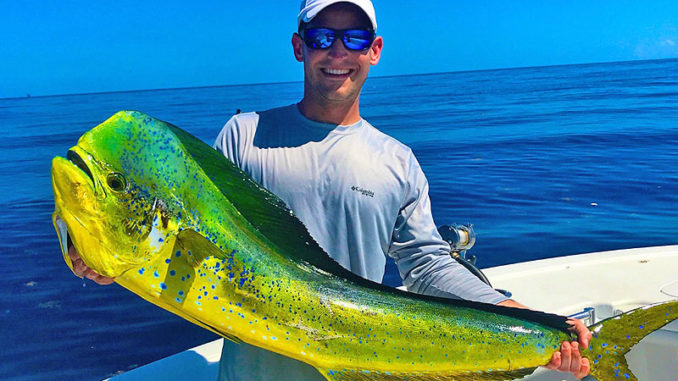
A well-defined rip line that developed in the Gulf of Mexico in early June attracted thousands of Mahimahi, aka dolphin.
Anglers who targeted these rips were rewarded with non-stop action and plenty of delicious dolphin for the freezer. If tuna isn’t your thing, finding a well-defined rip line can be your key to finding dolphin, wahoo and other pelagic species. And if you have larger live bait like hardtails or blackfin, you could even catch a blue marlin.
A rip line is a well-defined line of grass or trash that acts as a nursery for many baitfish and juvenile sportfish. It is also a distinct dividing line between green and clear-blue water, and it often marks a noticeable temperature change, with warmer water on the blue side.
Rip lines tend to fluctuate day to day, so if you can find someone at the docks who has fished one recently, you may be able to get some idea on how far out it can be found. Twenty to 30 miles would not be uncommon. There also are apps like RipCharts and Hilton’s that you can subscribe to for finding rip lines.
If you find a rip, slow-troll 5 to 7 knots with artificials on the blue side, and watch for grass on your line. With live bait, stay slower — 3 to 5 knots — or you’ll drown your bait.
You can bait with dead ballyhoo, rigged to swim like live bait, or troll subsurface shaky baits like a Russelure or Rapala, or smaller, plastic jigs for smaller “chicken” dolphin that will hit just about anything.
Mahimahi can be a bit crazy once they’re in the boat, so watch for hooks. You won’t need to gaff small dolphin, but be careful when gaffing larger fish, as they tend to flail near the boat.